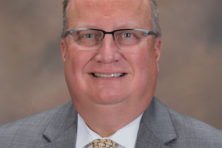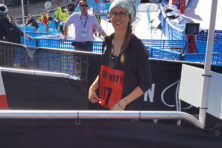How Communities are Innovating to fill Lending Gap
- Share
- Tweet
- Pin
- Share
Since banks tightened their purse-strings in the wake of the 2008 meltdown in the mortgage market, small businesses and start-ups have felt the squeeze as much as anyone.
“It is getting harder and harder for businesses to acquire capital for business startup and even business expansion,” said Sam Perlman, economic development manager for the Door County Economic Development Corporation (DCEDC). “Banks are much more conservative in their lending practices.”
When the owners of the Blue Horse Bistro in Fish Creek wanted to buy a new location for their popular 10-year-old restaurant, owners Eric Rasmusson and Carina Helm found it impossible to get traditional financing.
“Banks are not filling this gap at all. That’s why we exist. We can do these loans because our goal isn’t to make money, but to positively impact lives. We don’t need to make a big profit.” – Wendy Baumann, WWBIC director
A year earlier entrepreneur Paul Wanish experienced the same frustration when he tried to get his Ephraim soup bar off the ground. Wanish developed his business plan for the Czarnuszka Soup Bar through the NxLexel business class offered by the DCEDC, then took his plan for a one-employee, year ‘round soup and sandwich bar to three banks. All three turned him down.
“It sucks getting rejected like that,” Wanish said flatly.
Eventually the Blue Horse owners had to combine funds from a personal loan, savings, and the DCEDC’s Revolving Loan Fund (RLF). In Wanish’s case, he secured alternative financing for the building and coupled that with a $20,000 RLF loan, the most he could qualify for.
DCEDC Director Bill Chaudoir said he hears often from business owners that they can’t get money through traditional means. As a result, fewer entrepreneurs, even those with great ideas, are willing to take a risk.
“Unfortunately the only tool we have say and control over is the Revolving Loan Fund,” Chaudoir said, referring to the 22-year-old program that can fund half of a project’s cost up to $250,000.
The fund has serviced 70 loans with a value of $9.94 million in that time, leveraging $41 million in private investments. But the fund requires that a business show at least one full-time job created or maintained for every $20,000 lent – a tough match for the types of small businesses that Door County relies on.
Those sorts of strings and the failure of banks to fill this important gap have sent other communities back to the drawing board to create innovative funding mechanisms for small businesses.
The Green Bay Chamber of Commerce launched a micro-loan program through Advance, its economic development division, in 2011. The program provides loans of $5,000 to $100,000 to businesses and start-ups.
“We talk all the time to entrepreneurs who keep stumbling over the fact that the banks just can’t help with the smaller business needs,” said Marianne Dickson, director of Advance.
Many small businesses need access to small loans to survive, start up, or expand, she said. It could be $1,000 for a computer, $5,000 for equipment, or $10,000 to hire a new employee. Advance loans, with fixed interest rates of 8 percent, can be used for a wide variety of expenses, including inventory, working capital, payroll and accounting.
That’s not cheap money, but it is less expensive than the credit cards many business owners would otherwise use for such expenses.
“The size of the loan makes it very impractical for banks to help,” Dickson said. “It takes a bank as long to look at a $25 million loan request as a $25,000 request.”
Wendy Baumann, director of the Wisconsin Women’s Business Initiative Corporation (WWBIC) in Milwaukee, has spent 19 years finding innovative ways to connect business owners to capital by extending short-term loans of $1,000 to $100,000 to small businesses.
She said banks are not filling the small business lending gap at all.
“That’s why we exist,” Baumann said. “We can do these loans because our goal isn’t to make money, but to positively impact lives. We don’t need to make a big profit.”
These loans, like those of Advance, can be used for nearly anything and carry interest rates of 8 to 9 percent, though they can be as low as two percent depending on qualifications. The organization focuses on – but is not limited to – women, minorities and low-income individuals.
Banks traditionally provide very little in the way of business mentorship and counseling, but those are integral parts of the Advance and WBBIC micro-loan programs.
WBBIC assigns each business owner a business assistance coordinator that meets with them monthly to guide them through the minutia that comes after the spark of a great idea goes out.
“We try to ask the hard questions,” she said. “What is the stuff you don’t like to do, and how do we come up with a plan to address it?”
Wanish said the NxLevel course did that, and he’s grateful.
“Had I not taken that course I would have been lost,” he said. Unfortunately, that education went nowhere with the banks.
“Honestly, I don’t think they really care about the idea, they’re looking at the dry numbers,” Wanish said. “I understand that.”


